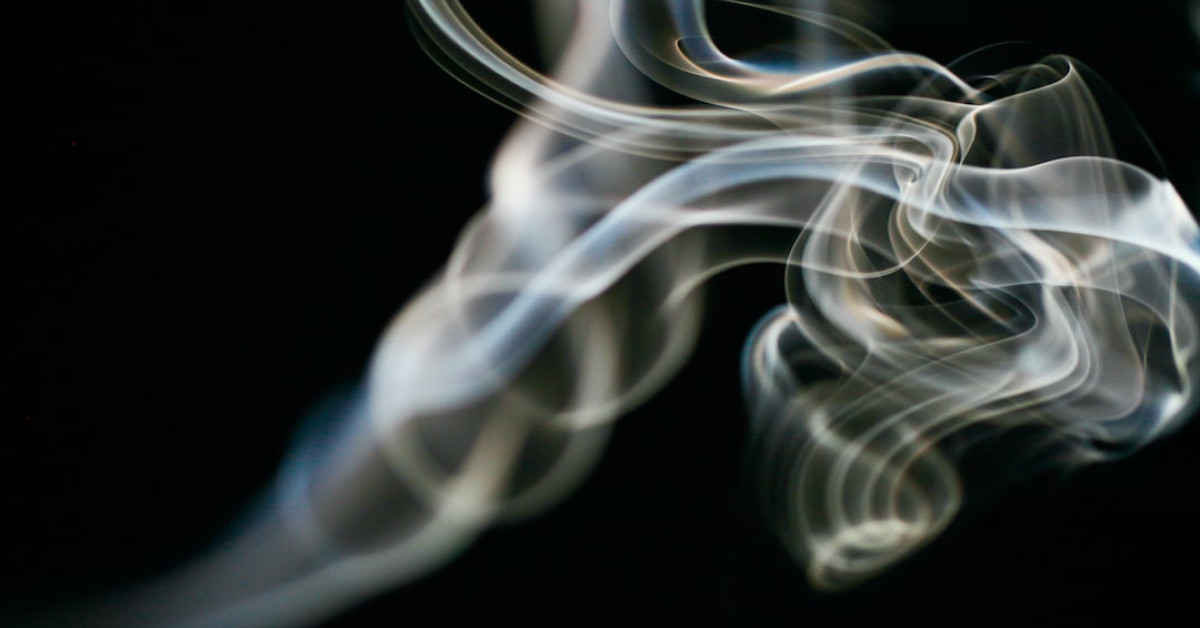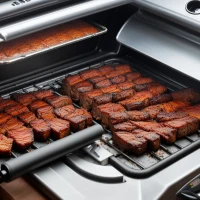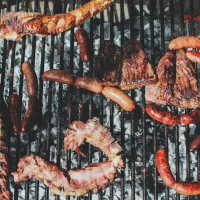Smoking brisket is an art form, a tradition that has been refined and perfected over generations. The key to a succulent, mouth-watering brisket lies not just in the choice of meat or the seasoning but in the control of the cooking process, specifically the temperature. Smoking brisket at 250 degrees offers an optimal balance, a slow coaxing of flavors and textures that can elevate your brisket from good to unforgettable. Vegetable smokers have also adopted this method to ensure their smokey flavors are infused perfectly into their vegetarian dishes. Let’s dive into the slow-cooked world of brisket perfection at 250 degrees!
The Significance of 250 Degrees in Smoking Brisket
When smoking brisket, the temperature you choose can make or break the dish. Knowing how to manage your smoker and maintain a steady 250-degree temperature is a skill that comes with understanding and experience.
Understand the Science of Low and Slow
At 250 degrees, the brisket undergoes a transformation. This moderate temperature allows the connective tissues to break down gradually, resulting in a tender, moist cut of meat without the risk of drying out. Meat Smoking enthusiasts appreciate that brisket, with its tough fibers, requires careful thermal treatment to reach the point of perfection.
The Importance of Temperature Consistency
Maintaining consistent heat is crucial in avoiding the dreaded brisket stall, where the internal temperature of the meat plateaus. It is here where patience pays off, and a steady hand on the temperature dial ensures success. Smoking meat is about precision, and your temperature gauge becomes the most important tool in your arsenal.
The Time Factor in Brisket Smoking
Ask any pitmaster, and they’ll stress the importance of not rushing the process. Depending on the size of your brisket, the total cooking time can vary significantly. However, at 250 degrees, you can expect a rough guideline of 1 to 1.5 hours per pound. Be prepared for a lengthy process, as full briskets can weigh anywhere from 8 to 20 pounds.
Patience is a Virtue, Especially with Brisket
The brisket smoking process is a labor of love. It’s about dedicating the day (or sometimes even overnight) to the pursuit of that perfect, smoky crust, and juicy, pull-apart interior.
Master the Preparation: Selecting and Seasoning Brisket
Before the smoking begins, the preparation phase is vital. Choosing a high-quality cut and seasoning it appropriately sets the stage for a successful cook.
Choosing the Right Cut
While meat is typically the highlight of smoking a brisket at 250 degrees, vegetables are not to be overlooked. For those looking towards plant-based options, choosing hearty vegetables like root vegetables or firm mushrooms can withstand the long smoking process.
Quality Matters in Meat and Vegetable Selection
Both in meat and vegetables, quality is paramount. Whether it’s the grade of the brisket or the freshness of the vegetables, always start with the best ingredients you can find.
The Art of Seasoning
Seasoning is more than just adding flavor; it’s about creating a crust, known as the ‘bark,’ that will enhance the smokiness and texture of the finished product. Rub ingredients often include salt, pepper, garlic powder, and sometimes a hint of sugar for caramelization.
Rub Tips for Vegetables
When it comes to seasoning vegetables, a lighter touch is usually best. Vegetable smokers can experiment with a range of spices, perhaps adding smoked paprika for an extra hint of smokiness, complementing the low and slow cooking process.
The Smoking Process: Managing Your Equipment
Executing the perfect brisket smoke at 250 degrees also depends heavily on your mastery over the smoker itself. Whether you’re using a traditional offset smoker, a kettle grill, or a modern pellet smoker, understanding how to manage the smoke and temperature is fundamental.
Smoker Types and How They Affect Brisket
Different smokers lend themselves to varying levels of maintenance and control. Offsets might require more hands-on management, while pellet smokers offer more consistent temperatures. Temperature control is the bottom line, regardless of the smoker type.
Getting to Know Your Smoker’s Quirks
Each smoker has its own personality. The way it responds to adjustments, its fuel consumption, and heat distribution patterns will all influence the smoked brisket outcome.
The Importance of Wood Choice in Smoked Flavors
Understanding that the wood you choose will directly affect the flavor profile of your smoked brisket or vegetables is almost as crucial as the temperature itself. Woods like oak, hickory, or mesquite are popular choices, each imparting its own unique taste.
Experimenting with Wood Types for Vegetables
Vegetables can take on a more subtle wood flavor, so many smokers recommend using milder woods like apple or cherry for a less overpowering taste.
After the Smoke Clears: Resting and Serving
One of the most overlooked components of smoking brisket at 250 degrees is the rest period post-smoking. This step is where the meat relaxes, redistributes its juices, and reaches its peak tenderness.
The Science of Resting Meat and Vegetables
Just as important as the smoke is the rest. For meat, a lengthy rest in a cooler or wrapped in foil can last from 1 to 4 hours. For smoked vegetables, a short rest period allows the flavors to meld and intensities to soften.
Perfecting the Brisket Rest
The brisket’s rest should not be rushed. Pointer for achieving this delicate balance between holding temperature and allowing the meat to relax involves using a cooler or oven set at a very low temperature to avoid the continuation of cooking.
The Joy of Slicing and Serving
Presentation and slicing can be the final touches that bring your smoked brisket or vegetables to life.
Slice Against the Grain for Brisket
When slicing the brisket, always cut against the grain. This ensures that each slice is tender and maintains its shape.
Arranging Smoked Vegetables
For vegetables, consider the plating as an opportunity to showcase the beauty of smoked dishes—layer them with colors contrasting against the deep, smoky hues.
Conclusion: The Journey to Brisket Nirvana
Smoking brisket at 250 degrees might seem daunting, but it’s a journey well worth the investment of time and energy. From the selection of meat or vegetables to the intricate dance of smoke and heat, each step is a learning experience, culminating in a dish that epitomizes the essence of good barbecue. Achieving brisket nirvana is within your reach when you master the 250-degree secret. Whether you’re a seasoned smoker or a first-timer, remember it’s the subtle nuances that make this slow-cooked delicacy a true culinary triumph.










